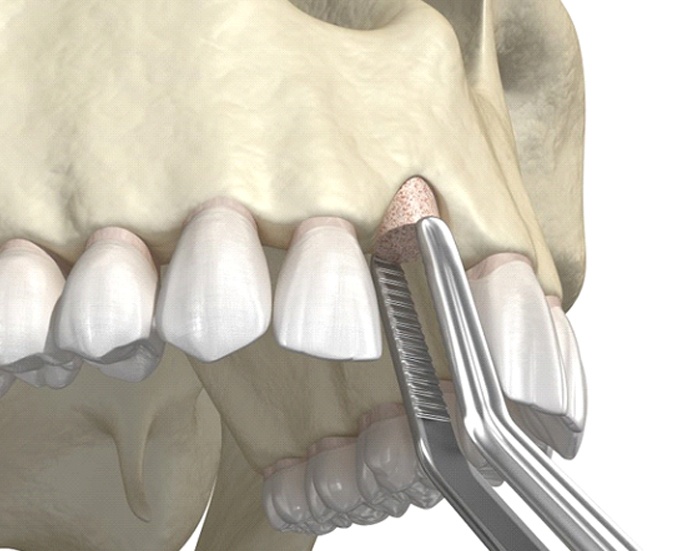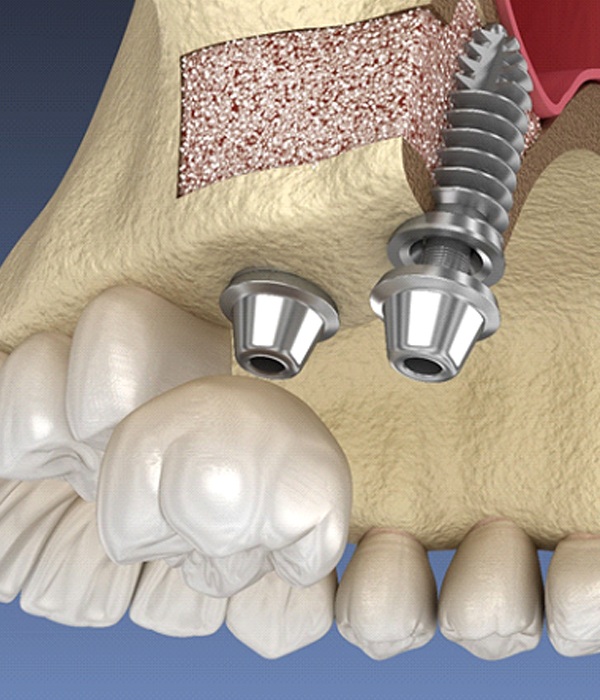
Bone Grafting – Colorado Springs, CO
Give Your Implants the
Support They Need

Would you like to get dental implants, but you lack sufficient jawbone support? Unfortunately, the moment a tooth root is removed, the bone can start to atrophy and degrade, weakening the support it can give to the remaining teeth and implant replacements. However, bone grafting can increase your chances of success with dental implants, and our team at Rocky Mountain Periodontal Specialists are experts in performing this preliminary work right here in our Colorado Springs office. If you think you could benefit from a bone graft before getting dental implants, contact us and schedule a consultation. We look forward to helping you achieve a strong, healthy smile again.
What Is a Bone Graft?

A bone graft is a preparatory procedure in which the jawbone is reinforced using either a synthetic or natural bone graft. The material typically comes either from a human donor, an animal, or man-made synthetic, all of which are sterilized and perfectly safe for grafting. In some cases, we may even be able to use the patient’s own bone tissue in the graft.
Although this procedure precedes implant placement most of the time, a patient could need bone grafting even if they plan on replacing missing teeth with traditional dentures or bridges. Basically, grafting can become necessary for anyone whose jawbone needs extra support.
Benefits of Bone Grafts

The primary purpose of bone grafts is to replenish the bone tissue that has either been damaged or lost because of tooth loss, trauma, or medical conditions like osteoporosis. By replacing and strengthening the jawbone, we make it easier for it to provide adequate support for dental implants and any remaining teeth. As a result, those who lack enough jawbone tissue can become eligible for dental implants when they otherwise wouldn’t.
Process of Bone Grafting

After you’ve met with one of our periodontists in a consultation and it is determined that you need a bone graft, you’ll then undergo this minor surgical procedure with just a local anesthetic. We make a small incision in you gums to reveal the bone tissue underneath. The grafting material is then added to the socket area where it will be absorbed and replaced by new bone growth. After closing the gum tissue back up, we wait for your jawbone to recover and accept the graft. A few months later, we’ll check to make sure it was a success and then possibly proceed with your implant placement.